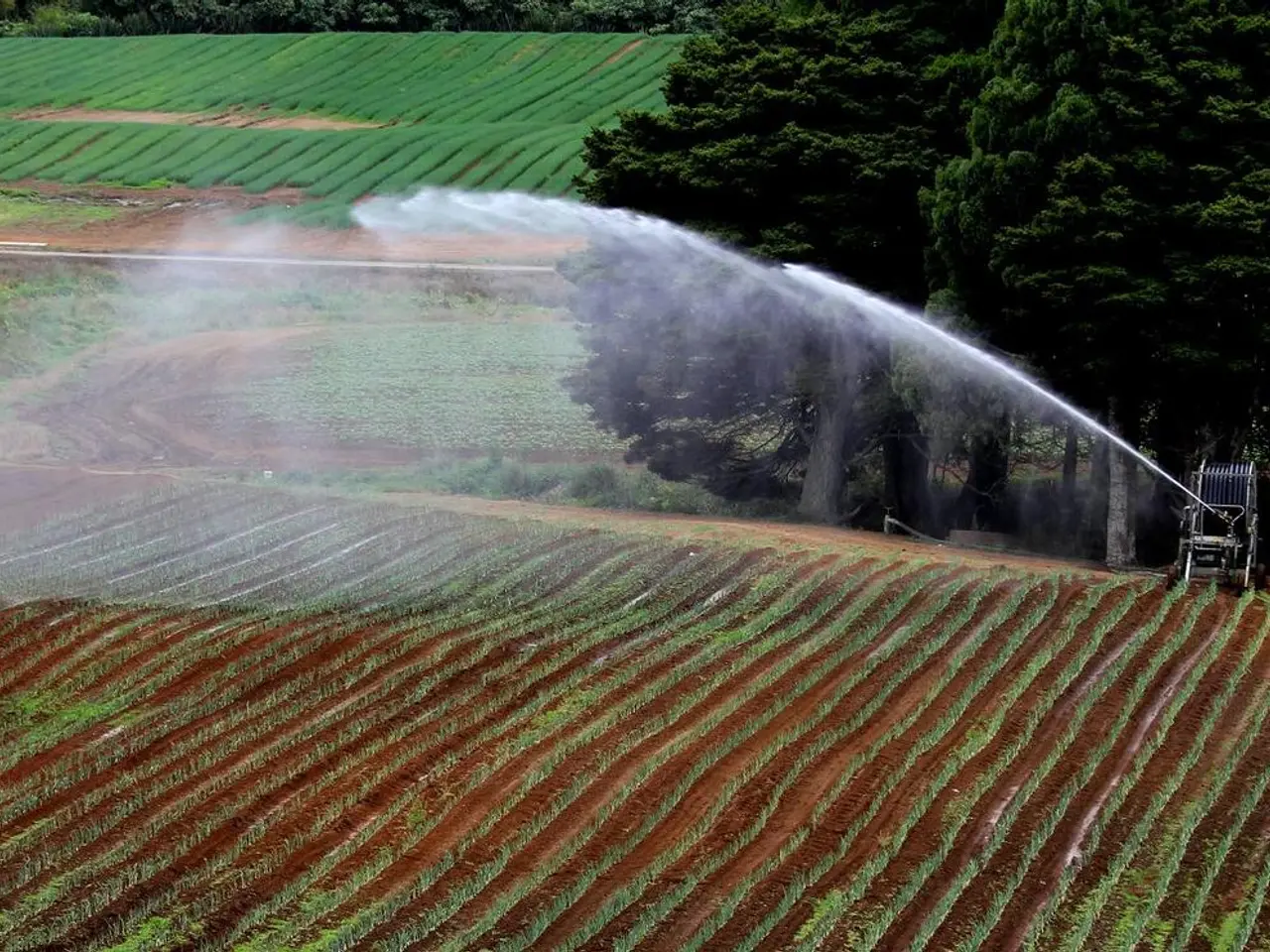Avoiding disruptions in irrigation system maintenance
In the quest for a lush, green garden, an efficient irrigation system is essential. However, maintaining this system is often overlooked, leading to inefficiencies and potential issues. To ensure your irrigation system remains in top shape and serves you well for years to come, follow these steps.
First and foremost, establish a regular maintenance schedule. This routine should include periodic cleaning and inspection of key components such as valves, sprinkler heads, pipes, and electrical wiring. Removing dirt, sediment, and mineral deposits prevents clogging and wear, ensuring a clean and well-adjusted system that provides even water distribution, reducing waste and providing plants with the actual amount of water they need.
Inspecting valves and electrical connections routinely is also crucial. Leaks, corrosion, or damaged wires can be detected early, preventing costly repairs and downtime. Use waterproof thread seal tape on threaded connections to prevent leaks.
Monitoring and adjusting water pressure is another vital aspect of maintaining an irrigation system. High pressure can cause misting, wasting water, while low pressure can reduce coverage. Use regulators or booster pumps to keep the system operating within the ideal pressure range.
Observing the irrigation system in operation at least every other month is equally important. Watering early morning or late afternoon reduces evaporation and increases water effectiveness. Make sure sprinklers water the root zones rather than walkways or streets to avoid waste and disease risk.
Repair leaks and malfunctioning sprinkler heads promptly to avoid increased water use and uneven watering. Regular maintenance helps to detect these signs early on.
Incorporating water-saving technologies such as rain sensors, rain gauges, and soil moisture sensors can further conserve water and improve efficiency. These devices shut off irrigation during rain or when soil moisture is already adequate.
Performing seasonal system checks, like spring activation checks and backflow testing, ensures safe and reliable operation throughout the year.
Consider alternatives like soaker hoses for garden beds that deliver water directly to soil, reducing evaporation and potentially cutting water use by up to 70%. Using high-quality materials for the irrigation system can make it more resistant to environmental influences and extend its lifespan.
Regular inspection and preventative maintenance not only reduce downtime and costly repairs but also conserve water, protect landscaping, and extend the system's operational life—often 20 to 25 years with proper care. A small defect in the irrigation system, if not detected in time, can become a major problem, leading to disruptions.
Remember, a well-maintained irrigation system doesn't require miracles—only the right maintenance. Look for unusually wet spots or puddles as they could indicate leaks or blockages in the irrigation system. Regular maintenance measures include cleaning of filters and nozzles, pressure control, and leak detection.
In winter or rural areas, pipes and connections can be damaged by frost or animals, making a full inspection at the start of the season advisable. In some cases, a more thorough inspection of the irrigation system may be required.
By following these steps, you'll create a well-maintained, efficient irrigation system that saves resources, maintains healthy plants, and provides a beautiful garden all year round.
Incorporating gardening tasks into your home-and-garden maintenance schedule, such as inspecting and cleaning sprinkler heads, can help ensure a lush and green lifestyle. Regularly checking for leaks and repairing malfunctioning components promptly can reduce water use and prevent issues that might harm your plants or lead to increased costs.




